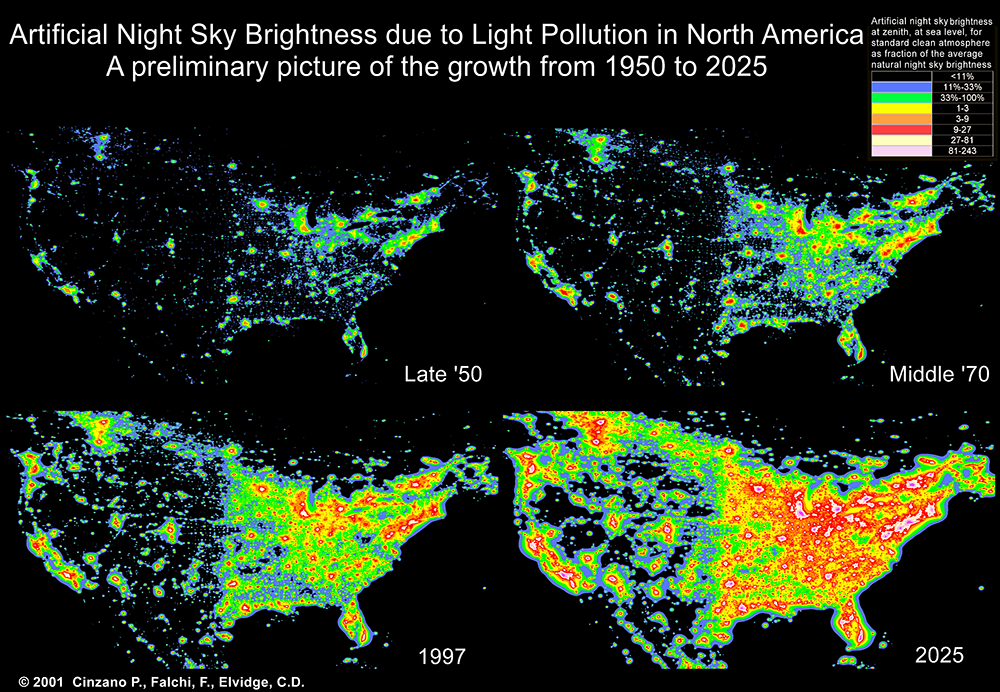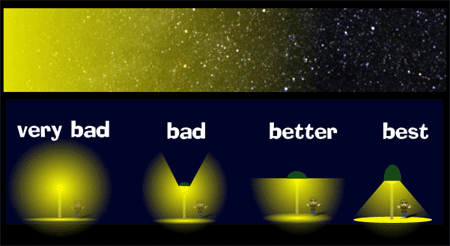Light Pollution is a controllable by-product of outdoor lighting that not only washes out the stars, but negatively impacts wildlife, human health, energy consumption, heritage, and safety. All but the last few generations of humans have enjoyed awe-inspiring views of the Milky Way and skies peppered with stars from their homes. Currently, the Milky Way is invisible to 80 percent of Americans and one-third of the world’s population. Under current circumstances, these numbers will only continue to swell. With light pollution increasing at a rate four times that of the human population, it is projected that dark skies will disappear entirely from the developed world by the end of the century.

Growth in light pollution in the last 75 years (Photo: P. Cinzano, F. Falchi [University of Padova], C.D. Elvidge [NOAA National Geophysical Data Center, Boulder]. Copyright Royal Astonomical Society. Reproduced from the Monthly Notices of the Royal Astromical Society by permission of Blackwell Science)
The good news is that light pollution can be controlled with the flip of a switch. Increasing awareness of light pollution can bring about improved lighting designs that are dark sky friendly.

Together, we can stop the growth of light pollution and maybe even turn it in the other direction.
For more information on the issue and the value of dark skies visit:
Inspiring Time Lapse Photography and Dark-Sky Awareness:
http://www.illusionoflights.com/
International leaders in preserving dark skies:
Our Pittsburgh Chapter:
Take a trip to dark skies:
http://darksitefinder.com/maps/world.html
Learn how to photograph the Milky Way: